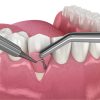Maintaining oral functionality is crucial for overall health and well-being. Whether you’re dealing with minor dental issues or more complex conditions, modern dentistry offers various procedures to restore and enhance oral functionality. For businesses in the dental field, understanding these common procedures is essential to providing patients with the best care. This article explores some key dental procedures, with a focus on “dentist in” practices and the transformative role of “orthognathic surgery.”
The Role of Preventive Care
Preventive care is the cornerstone of maintaining oral health. Regular check-ups and cleanings are vital for catching problems early. A “dentist in” your area is likely to emphasize the importance of routine care, as it helps in preventing more serious issues down the line. Preventive treatments like fluoride applications, sealants, and deep cleanings can significantly reduce the risk of cavities and gum disease, ensuring that your patients maintain optimal oral functionality.
Restorative Procedures for Damaged Teeth
Restorative dental procedures are designed to repair damaged teeth and restore their functionality. Fillings, crowns, and bridges are common treatments that a dentist in any location might offer. These procedures are essential for patients who have suffered from tooth decay or injury. Crowns, for instance, are used to cover and protect a damaged tooth, ensuring it functions properly. Bridges replace missing teeth, preventing misalignment and maintaining the integrity of the patient’s bite.
Orthodontic Solutions for Misalignment
Orthodontic treatments are crucial for correcting misaligned teeth, which can significantly impact oral functionality. A “dentist in” your community may recommend braces or clear aligners to patients with crooked or crowded teeth. Proper alignment is not just about aesthetics; it also improves the ability to chew and speak clearly. Orthodontic solutions are often the first step in a comprehensive plan to enhance oral functionality.
The Impact of Orthognathic Surgery
The orthognathic surgery is a more advanced procedure, often recommended when there are severe misalignments of the jaw. This surgical intervention is performed to correct congenital disabilities, facial injuries, or issues that cannot be resolved with orthodontics alone. A “dentist in” collaboration with an oral surgeon will typically guide the patient through this process. The surgery not only improves the appearance of the jawline but also significantly enhances chewing, speaking, and breathing.
Dental Implants:
Dental implants are another common procedure aimed at restoring oral functionality. When a tooth is lost, the gap can cause a host of issues, including misalignment and difficulty in chewing. A “dentist in” your network will likely offer dental implants as a permanent solution to replace missing teeth. Implants mimic the natural tooth structure, ensuring that patients regain full functionality of their mouth. This procedure has a high success rate and can greatly improve the quality of life for those who have lost one or more teeth.
Gum Disease Treatments for Long-Term Health
Gum disease is a common issue that can severely impact oral functionality if left untreated. A “dentist in” your practice should be well-versed in treating periodontal disease through various methods such as scaling, root planing, and laser therapy. These treatments are crucial for maintaining the health of the gums, which are the foundation for strong and functional teeth. Addressing gum disease early can prevent tooth loss and other complications.
Conclusion:
For dental professionals, understanding the range of procedures available to improve oral functionality is key to offering comprehensive care. From preventive measures to advanced surgeries like orthognathic surgery, each procedure plays a vital role in maintaining and restoring the function of the mouth. By working closely with a “dentist in” your network, you can ensure that your patients receive the best possible care, tailored to their specific needs. Prioritizing these procedures not only improves oral health but also enhances overall quality of life.






